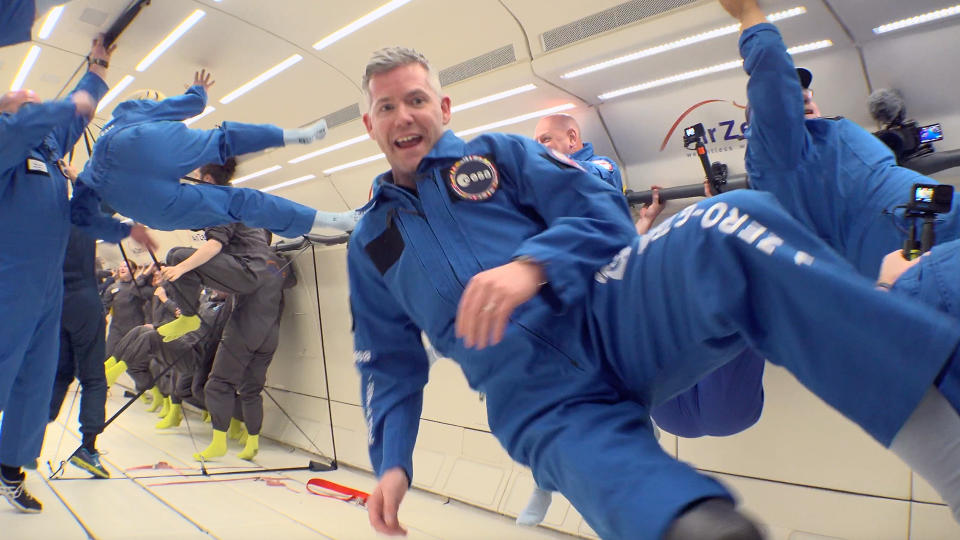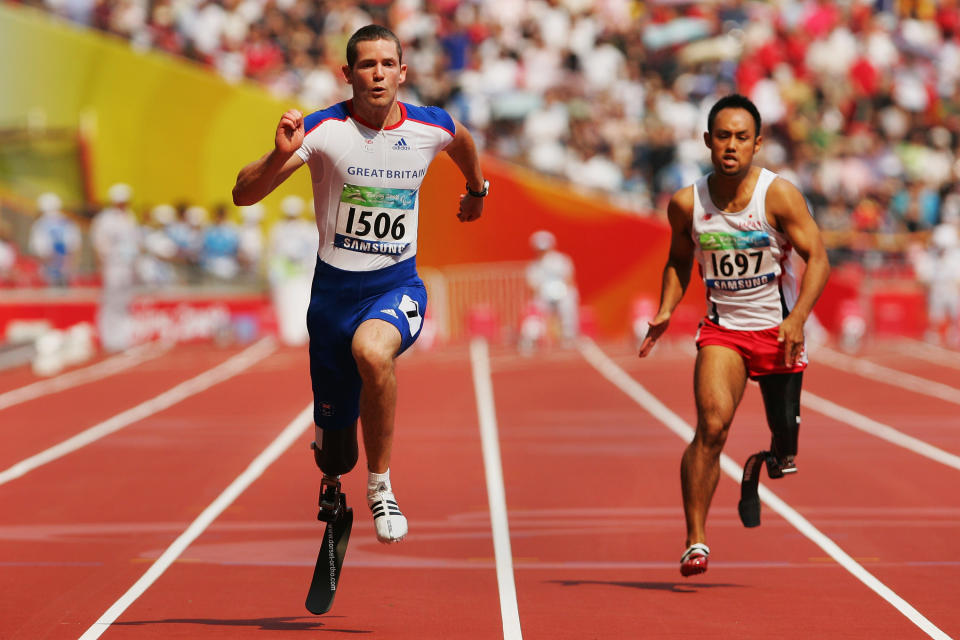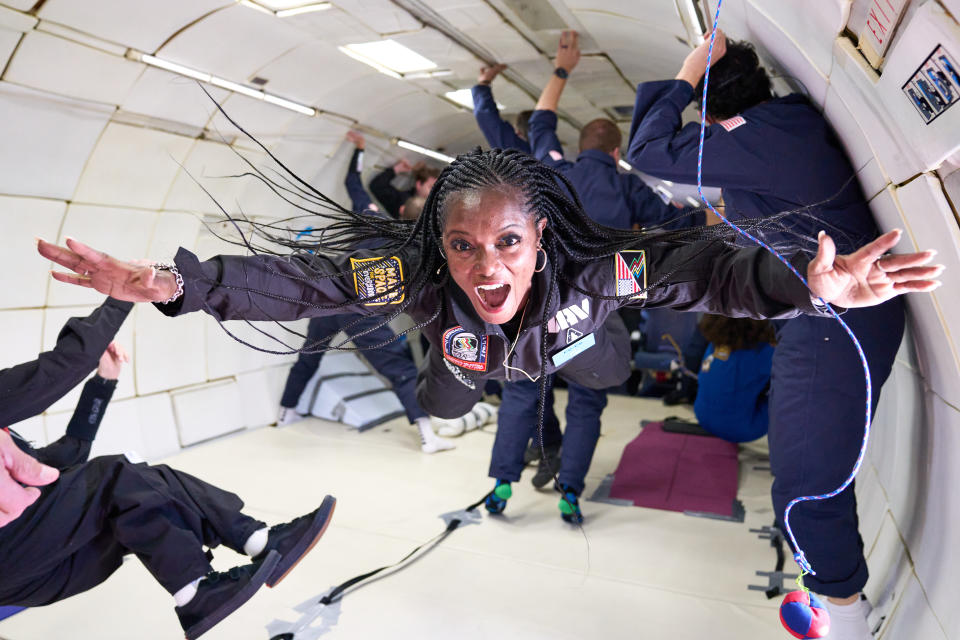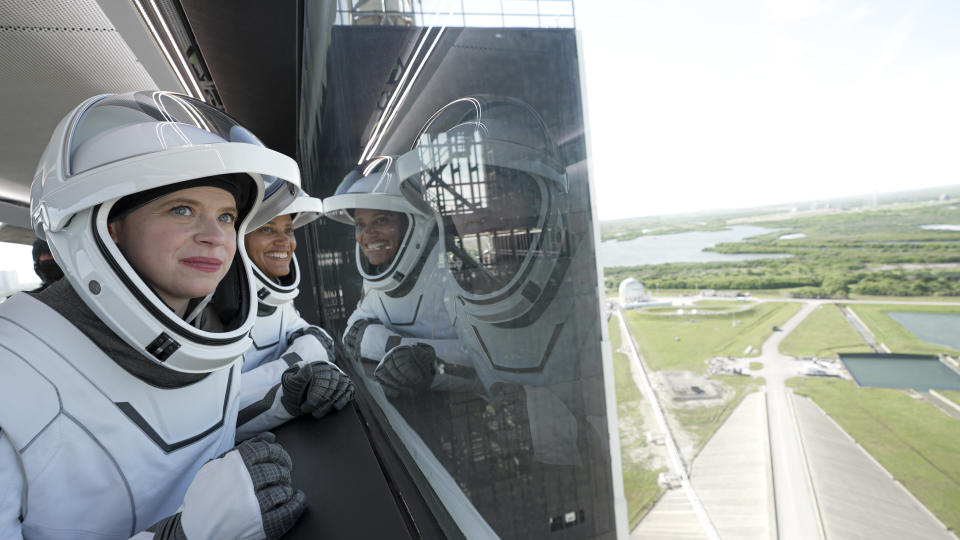When you buy through links in our articles, Future and its syndication partners may earn a commission.

Days after the first “paraastronaut” moved one step closer to approval for space station missions, a new study finds that space exploration’s efforts to promote diversity offer valuable lessons for health care professionals here on Earth.
European Space Agency (ESA) Reserve astronaut John McFall, a surgeon and former Paralympic sprinter, could be in line for future International Space Station (ISS) missions after a recent feasibility analysis; the ESA-led effort found no major issues that would pose a mission risk if an ISS astronaut were to use a prosthetic limb. While not guaranteed for spaceflight, McFall may be the first person with a prosthetic limb to board the ISS in a quarter century of operations.
“This is a potential opportunity to send a powerful message to society and humanity and challenge the narrative that exists around people’s expectations of what people with disabilities can do,” McFall told reporters during a livestreamed press conference last week. (A recording of the event was made available to Space.com by ESA.)


Inclusion is the theme taken up in a new study in the journal Communications Medicine, published Thursday (July 25), the day before National Disability Independence Day today (July 26). McFall’s example, the study argues, presents a moment for health care organizations to promote accessibility through initiatives such as upgrading equipment, changing training and improving employee selection criteria.
Related: Equal access to space: New research explores how we can get more ‘paraastronauts’ into the air
The Communications Medicine study is not directly related to McFall’s feasibility analysis, although one of its authors (Jennifer Ngo-Anh) used to coordinate ESA science activities, including the ISS. Ngo-Anh recently moved to ESA’s Directorate for Commercialisation, Industry and Competitiveness.
Lead author Fahran Asrar, a clinical physician and associate professor at the University of Toronto, says the team drew inspiration from ESA’s paraastronaut program and from Hayley Arceneaux, a cancer patient with a prosthetic limb who flew on the privately funded Inspiration4 mission with SpaceX in 2021.
“We’re looking at how space technology and the space sector can actually make a positive difference to our challenges on Earth, let’s say, whether it’s public health, environmental health, or other social aspects that can help our patients here,” Asrar told Space.com.
McFall is a great example of a healthcare sector that continues to struggle to be inclusive, Asrar said. While there is always room for improvement in inclusion in space, other sectors, such as healthcare, need to catch up, he said.
“There’s a lot of research that shows that people with disabilities are less likely to find employment, compared to someone without a disability,” he said. “The other statistics and information points to a lot of what we call ableism, where people just have this assumption that, ‘Oh, this person just wouldn’t be able to do it,’ or ‘They might not be able to handle medical training, medical roles.’”


Asrar’s research team also includes engineer and communications professional Dana Bolles, who is missing both legs, according to an interview she did with her employer, NASA. Initially inspired by the astronaut program, Bolles later earned a degree in mechanical engineering, not only out of interest but also because she uses a wheelchair and medical equipment: “I thought having that skill and knowledge would be useful not only in my work life, but also in my everyday life.”
Bolles is an ambassador for the nonprofit AstroAccess program, which flies people with disabilities in parabolic aircraft to conduct scientific research. Her 2021 flight explored spaceflight aids.
One of Bolles’ biggest career challenges, she said, is people who “make assumptions about what I can’t do,” which can limit opportunities for meetings or conversations. “That can be hard to overcome, depending on who that person is,” she said.
Related: Zero-G flight for disabled ambassadors shows space is accessible to everyone


Asrar’s inclusion study correctly points out that spaceflight itself is disabling. Despite countermeasures, all people who fly aboard the ISS experience muscle weakness, fluid shifts, and other body changes. If the mission lasts weeks or months, there is a long period of medically supervised rehabilitation after the flight.
On the other hand, the microgravity of space could offer greater accessibility to some limitations, Asrar said. Perhaps, he mused, it would be possible to use the missions of McFall (should he get one), Arceneaux and others to “translate all that experience — the technological capabilities to help in space — [to] to benefit people with disabilities on earth.”


McFall’s leg was amputated in a motorcycle accident at age 19, according to his biography. He went on to not only win a medal as a sprinter at the 2008 Paralympics, but also receive numerous medical certifications — including basic surgical training, including general surgery, urology and trauma, and orthopedics. When needed, McFall wears a prosthetic leg — which he wears for training activities and any space flights he’s selected for.
“I’m going to have to wear a prosthetic limb for launch, which means I’m going to have to wear it inside the spacesuit. And that’s to meet the minimum emergency requirements for launch,” McFall said, referring to evacuation procedures. “I would also have to wear a prosthetic limb in space to do the exercise measures, to protect my body from the effects of microgravity.”
RELATED STORIES:
— Europe’s new astronaut class includes 2 women and a Paralympic trauma surgeon
— Zero-G flight for disabled ambassadors shows space is accessible to everyone
— Equal access to space: New study explores how we can get more ‘paraastronauts’ into the air
The feasibility analysis covered many aspects of McFall’s prosthesis, including whether it would work with ISS exercise equipment like the treadmill and bike, and whether changes to the volume of his residual limb would affect how his prosthesis fits on his body. So far, the analysis has only examined the ISS environment, but future efforts may consider spacewalks, McFall said.
“If we can demonstrate how methodically and thoroughly we’ve conducted this study, and present the findings in a very sensible, logical way, there’s really a lot of power in people being more open-minded about participating in … studies like this in the future,” McFall said. “We’re really setting a precedent.”
McFall is not a full-time ESA astronaut, nor has he completed all of the agency’s basic training. Instead, he is part of the agency’s reserve group for potential short-term space opportunities and has undergone familiarization training. One reserve astronaut from McFall’s group has been in space recently: Marcus Wandt of Sweden flew on the week-long Axiom Space Ax-3 private mission to the ISS earlier this year.